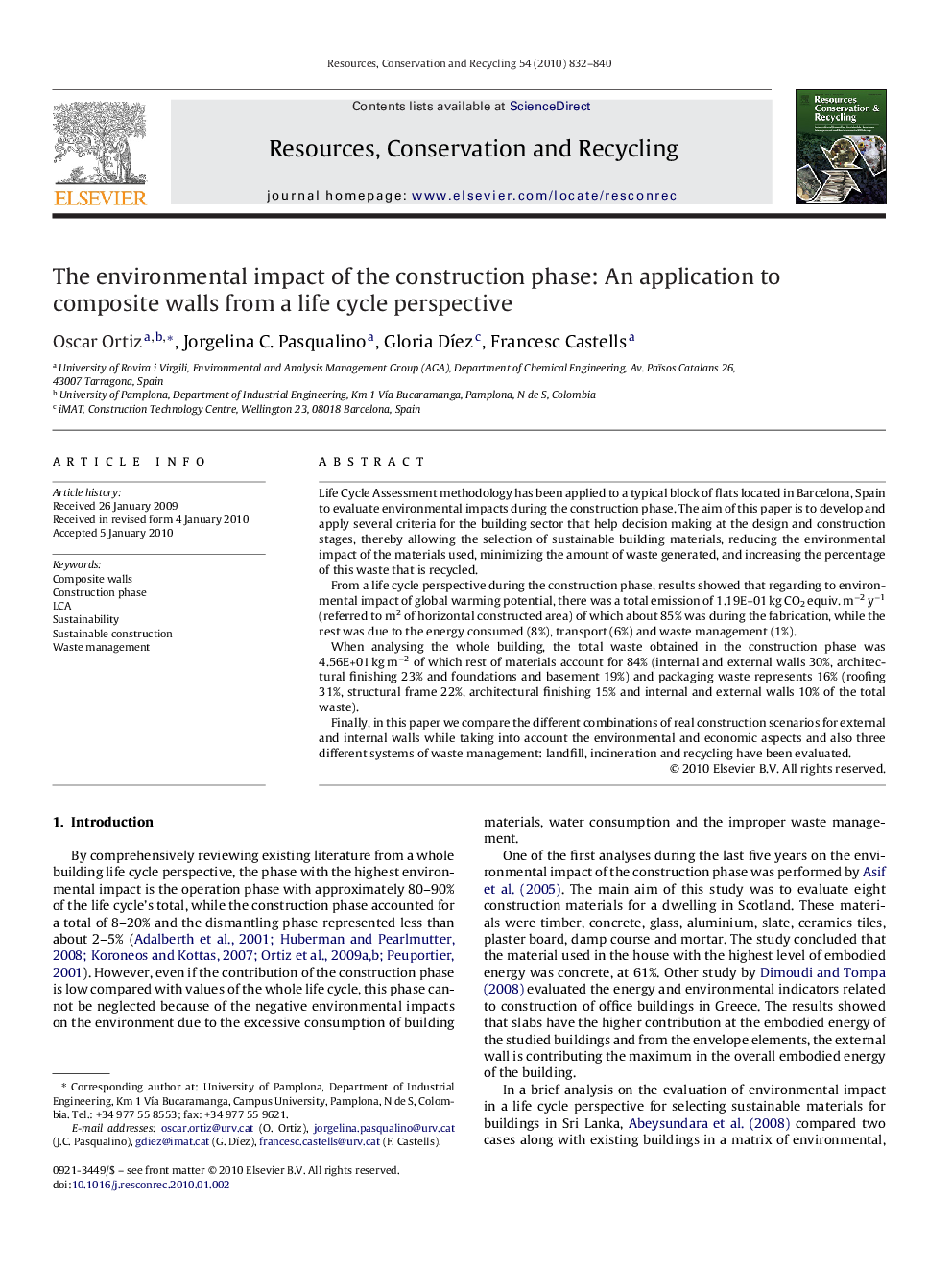| Article ID | Journal | Published Year | Pages | File Type |
|---|---|---|---|---|
| 1063933 | Resources, Conservation and Recycling | 2010 | 9 Pages |
Life Cycle Assessment methodology has been applied to a typical block of flats located in Barcelona, Spain to evaluate environmental impacts during the construction phase. The aim of this paper is to develop and apply several criteria for the building sector that help decision making at the design and construction stages, thereby allowing the selection of sustainable building materials, reducing the environmental impact of the materials used, minimizing the amount of waste generated, and increasing the percentage of this waste that is recycled.From a life cycle perspective during the construction phase, results showed that regarding to environmental impact of global warming potential, there was a total emission of 1.19E+01 kg CO2 equiv. m−2 y−1 (referred to m2 of horizontal constructed area) of which about 85% was during the fabrication, while the rest was due to the energy consumed (8%), transport (6%) and waste management (1%).When analysing the whole building, the total waste obtained in the construction phase was 4.56E+01 kg m−2 of which rest of materials account for 84% (internal and external walls 30%, architectural finishing 23% and foundations and basement 19%) and packaging waste represents 16% (roofing 31%, structural frame 22%, architectural finishing 15% and internal and external walls 10% of the total waste).Finally, in this paper we compare the different combinations of real construction scenarios for external and internal walls while taking into account the environmental and economic aspects and also three different systems of waste management: landfill, incineration and recycling have been evaluated.
